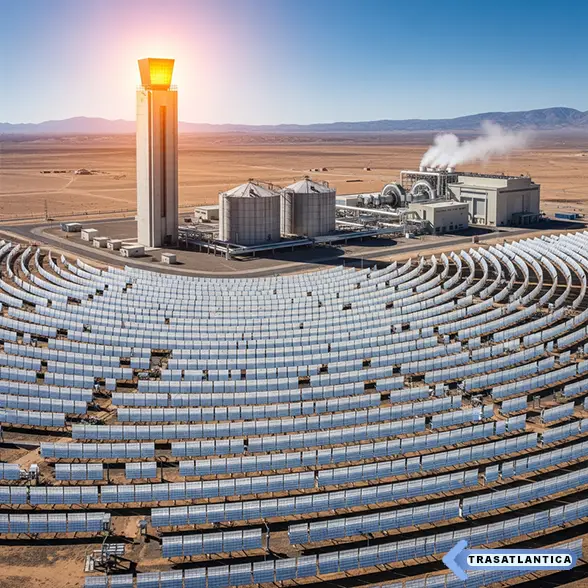Thermal Storage plays a pivotal role in enhancing the efficiency and reliability of solar power plants. By capturing heat energy generated during peak sunlight hours, it enables continuous electricity production even after sunset. This capability addresses the intermittent nature of solar energy and helps stabilize power supply. As solar adoption increases worldwide, innovations in thermal storage technology become crucial to meeting rising energy demands sustainably.
Thermal Storage Technologies Transforming Solar Power
Among various methods, molten salt storage remains the most prominent technology utilized in large-scale solar thermal plants. This technique involves heating a mixture of salts to store thermal energy, which later generates steam to drive turbines. Such systems allow extended power output beyond daylight hours and reduce reliance on backup fossil fuels. Other emerging materials, including phase change substances, offer potential advantages by absorbing or releasing heat during transitions between solid and liquid states. These advances contribute to improved storage capacity and operational flexibility, making solar plants more competitive.
Operational Benefits of Thermal Storage in Energy Systems
The integration of heat storage significantly enhances grid stability by smoothing power fluctuations. It enables load shifting, allowing energy generated at noon to supply peak demand in the evening. Additionally, thermal storage reduces curtailment by absorbing excess solar output that might otherwise go unused. From an economic perspective, plants with advanced storage capabilities achieve higher capacity factors and improved return on investment. Environmental benefits include lowered greenhouse gas emissions due to decreased fossil fuel usage. Together, these factors position thermal storage as a critical component in modern renewable energy infrastructure.
Innovations Accelerating Thermal Storage Adoption
Recent developments focus on increasing efficiency and lowering costs. Improved insulation materials minimize heat loss, while advanced control systems optimize charging and discharging cycles. Furthermore, modular designs facilitate scalability and ease installation in diverse locations. Research into alternative heat transfer fluids seeks to enhance thermal conductivity and safety. Collaborations between industry leaders and academic institutions foster rapid commercialization of these technologies. As a result, thermal storage solutions gain traction in both new solar projects and retrofits of existing plants.
Strategic Implications for Future Solar Energy Expansion
The growing integration of thermal storage aligns with global efforts to decarbonize electricity sectors. By enabling reliable power supply, it supports higher penetration of renewables and reduces dependence on fossil backup. Policy frameworks increasingly recognize the value of storage, providing incentives and regulatory support. Moreover, coupling thermal storage with complementary energy systems, such as batteries or hydrogen production, creates synergistic benefits. These strategies help diversify energy portfolios and enhance resilience against climate variability.
In conclusion, thermal storage enhances solar power plants by improving energy reliability, operational efficiency, and environmental outcomes. Ongoing innovation and supportive policies will continue driving its adoption, positioning it as a cornerstone of the renewable energy future.
